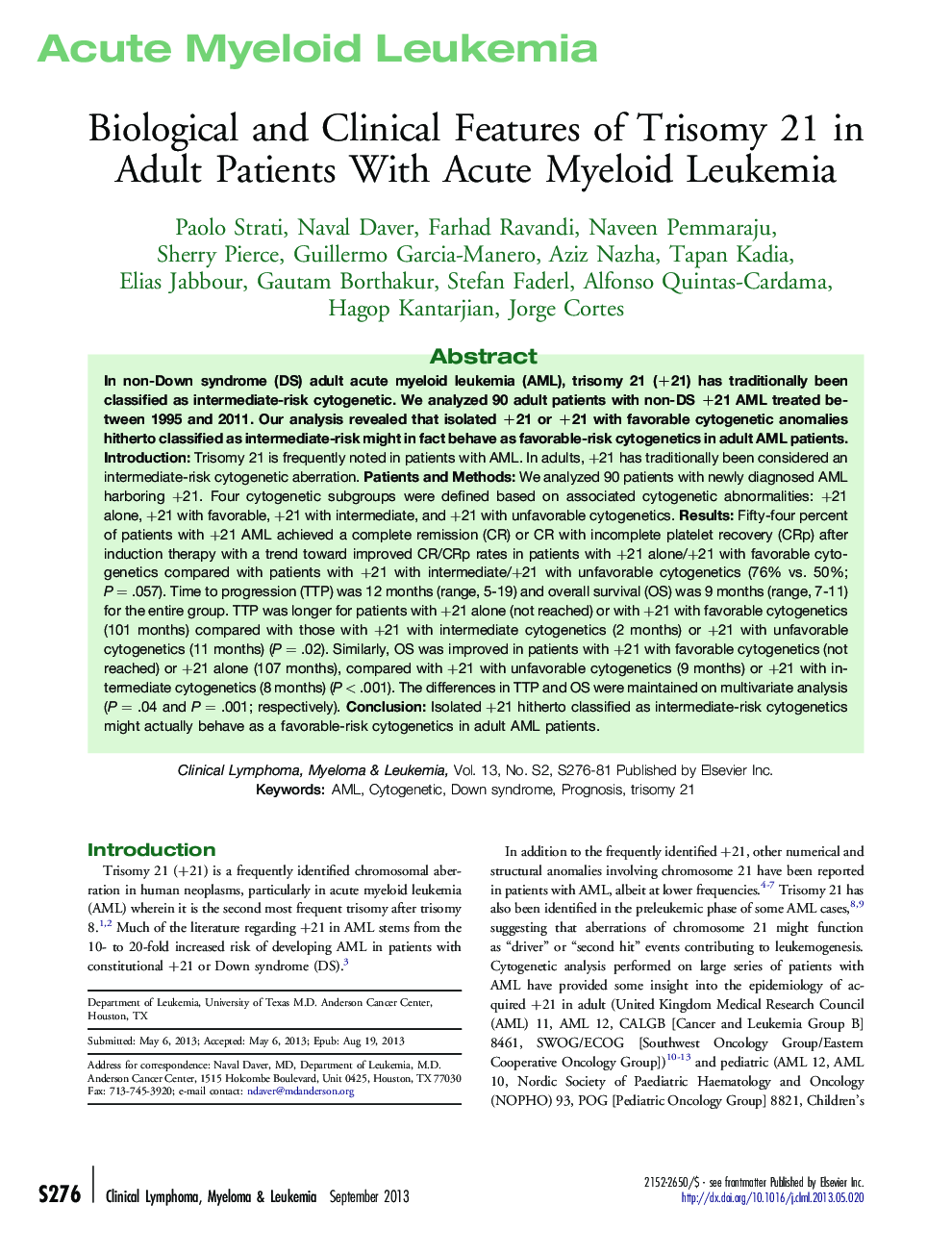| Article ID | Journal | Published Year | Pages | File Type |
|---|---|---|---|---|
| 2755027 | Clinical Lymphoma Myeloma and Leukemia | 2013 | 6 Pages |
IntroductionTrisomy 21 is frequently noted in patients with AML. In adults, +21 has traditionally been considered an intermediate-risk cytogenetic aberration.Patients and MethodsWe analyzed 90 patients with newly diagnosed AML harboring +21. Four cytogenetic subgroups were defined based on associated cytogenetic abnormalities: +21 alone, +21 with favorable, +21 with intermediate, and +21 with unfavorable cytogenetics.ResultsFifty-four percent of patients with +21 AML achieved a complete remission (CR) or CR with incomplete platelet recovery (CRp) after induction therapy with a trend toward improved CR/CRp rates in patients with +21 alone/+21 with favorable cytogenetics compared with patients with +21 with intermediate/+21 with unfavorable cytogenetics (76% vs. 50%; P = .057). Time to progression (TTP) was 12 months (range, 5-19) and overall survival (OS) was 9 months (range, 7-11) for the entire group. TTP was longer for patients with +21 alone (not reached) or with +21 with favorable cytogenetics (101 months) compared with those with +21 with intermediate cytogenetics (2 months) or +21 with unfavorable cytogenetics (11 months) (P = .02). Similarly, OS was improved in patients with +21 with favorable cytogenetics (not reached) or +21 alone (107 months), compared with +21 with unfavorable cytogenetics (9 months) or +21 with intermediate cytogenetics (8 months) (P < .001). The differences in TTP and OS were maintained on multivariate analysis (P = .04 and P = .001; respectively).ConclusionIsolated +21 hitherto classified as intermediate-risk cytogenetics might actually behave as a favorable-risk cytogenetics in adult AML patients.
